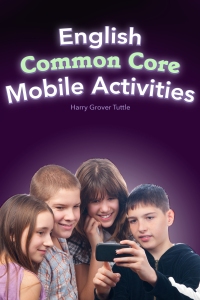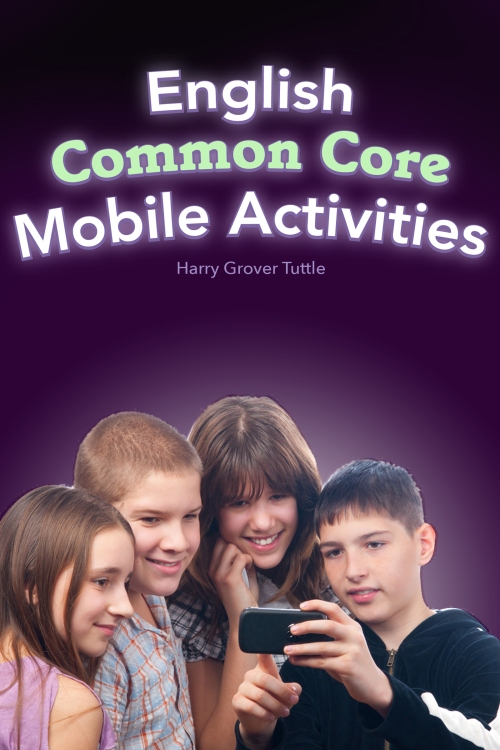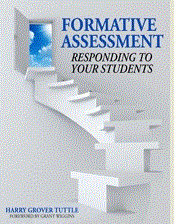Assessment dominates education from K-12 through college. There are different types of assessment, formative (helps students improve) and summative (grading of students). However, institutional assessment involves the bigger picture of how an institution or a department is doing academically.
In institutional assessment, teachers enter data into a mega-database. For example, teachers may enter their students’ grades on each section of the final. Then someone, often a department head, analyzes the overall results using the online data, to assess the student learning across specific courses and across the department.
Institutional assessment has some basic flows
1) Most institutions have not identified a specific enough curriculum that can be assessed. Many contain very general statements of learning. For example, English might state that students will write a well-written essay. Has the English department specified what constitutes a well-written essay? Likewise, a Modern language department may have the curriculum statement “The student should speak in sentences that have relatively simple structures and concrete vocabulary”. What does “speak” mean? Does it mean to be able to talk about one’s life, to hold a conversation. to repeat from memory? When there are only general learning statements, there cannot be any meaningful assessment.
2) If departments have identified specific learning goals, what is the priority of those learning goals? For example, in English the purpose of writing is to communicate ideas or feelings. Shouldn’t the organization of ideas be more important than the spelling? Or does spelling/grammar have the same assessment weight as organization? Likewise, in Modern Languages, are all skills (listening, speaking, reading and writing) treated equally in assessment weighting even though both in class and in the real world, people listen and speak almost double the amount that they read and write? Have the specific learning goals and their priority been communicated to the teachers/students through a department website/wiki?
3) The departments do not have exemplars that show the quality that they expect of students. Does the English department share electronically with all English teachers essays that show what constitutes a high level paper, an acceptable paper, and a non-acceptable paper? Again, are these exemplars on the department website for each course? Does the Modern Language department share audio files of a good ten sentence conversation through their website or an their department app?
4) They have vague assessment tools. The English department has a generic rubric (has good organization, conveys ideas, etc.) that can be interpreted differently by different people. What type of essay will be the written? An autobiographical essay requires a very different approach than a contrast essay. In Modern Languages, how will writing be assessed – holistically or analytically? If different educators can come up with different scores for the same student, then the assessment tool does not accurately measure learning. Teachers can receive a digital image of the rubric and work assessed using that rubric. How well does the assessment tool match up with how the information was taught in class? Is the assessment tool such as the final developed at the competency level or at the highly competent level? Students may be competent but not highly competent
5) The departments do not do a thorough analysis to get at the root problem once they have discovered a gap. If the students do not achieve well, was it due to the students’ lack of effort, a misunderstanding of how to answer the assessment question, a specific word in the assessment question, the thinking level of the test question, the structure of the assessment item, the textbook, the textbook’s powerpoints, the teacher’s explanation, the homework, or the online work? Usually much additional exploration is needed to determine the real reason for the gap. Once the department identifies the gap, what specific strategy will help the students over come this gap? Will the department suggest technology-based strategies that appeal to students such as Youtube videos, interactive websites, interactive apps and that help the students directly overcome the gap?
6) Most important of all, how does the institutional assessment help students improve in the course right now? Most institutions assess once a semester. After the analysis, the department focuses on what changes will happen in the future year. Unless regular assessment is done in small intervals throughout the year and changes made almost instantly, then the assessment does not benefit the present students. Next year’s students may be very different than the students who took this assessment. Classroom teachers need access to the online data and analysis so they can take class time to provide the students new learning strategies. Then, students can be successful learners!
How does your institution assess student learning?
My Spanish spontaneous speaking activities (20+) includes Modified Speed Dating (Students ask a question from a card-whole class), Structured Speaking (Students substitute in or select words to communicate in pairs), Role Playing (Students talk as people in pictures or drawing from 2-4 people) and Speaking Mats (Can talk using a wide variety of nouns, verbs and adjectives to express their ideas- pairs or small group), Spontaneous Speaking (based on visuals or topics in pairs), and Grammar speaking games (pairs or small group). Available for a nominal fee at Teacherspayteachers: http://bit.ly/tpthtuttle
My three formative assessment books: http://is.gd/tbook

















How valuable is Peer Review?
Published December 15, 2008 Change , Comment , Composition , Edublogger , Education , ELA , English , Feedback , peer , Peer Review , Review , Revision , write , Writing Leave a CommentTags: Change, Comments, Composition, edublooger, Education, English, Essay, Feedback, Improve, peer, Peer Review, Revision, write, Writing
When my students hand in their final English essay, they also hand in their peer reviewed draft. I’ve noticed that usually they do not incorporate the changes that peers suggest.
I gave them a survey on peer review to help me better understand their use of peer’s comments. They admitted that they use very little of peer review.
Some of their reasons:
The reviewer isn’t as smart as I am.
I don’t care what they “feel” about my paper. What is good/bad according to the rubric?
They don’t understand the rubric.
It does not help me when a reviewer finds a mistake if he cannot tell me how to fix it.
They don’t understand my thinking/how I wrote the paper.
The reviewer found some spelling mistakes but missed the big things like my first body paragraph having two topics.
They don’t try/ they do not take it seriously.
How well do your students peer review each other? How valuable is the peer review to the author?
For any one who is interested in implementing formative assessment in the classroom, my book,
Formative Assessment: Responding to Students is available through Eye-on-Education.